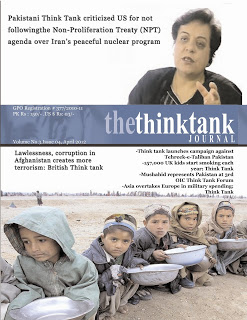In a seismic shift for the global economy, U.S. President Donald Trump has unleashed a bold tariff policy in August 2025, slapping hefty duties on dozens of countries and upending trade norms. With rates as high as 50% set to kick in next Thursday, this aggressive move targets both allies and competitors, aiming to bolster American industry while sending shockwaves through international markets.
A New Tariff Regime: The Plan and Its Scope
Trump’s latest tariff strategy, rolled out amid a shaky U.S. jobs report, introduces a tiered system of duties that spares few trading partners. Countries like Brazil face a staggering 50% tariff, while Canada contends with a 35% hit on its exports to the U.S. Unlike Trump’s first-term focus on China, this policy casts a wide net, impacting nations across Asia, Europe, and Latin America. The goal? To shield U.S. manufacturing and reduce reliance on foreign goods, doubling down on the “America First” mantra.
The announcement has sparked a firestorm of reactions. On X, opinions split sharply: some cheer the protectionist push as a lifeline for American workers, while others warn of skyrocketing prices and global retaliation. With markets already jittery, the tariffs promise to reshape trade flows and test economic resilience worldwide.
Economic Shockwaves: Who Wins, Who Loses?
The U.S. Economy: Boom or Bust?
At home, the tariffs are a high-stakes bet. The administration touts early revenue gains as a win, with duties funneling billions into U.S. coffers. Yet, the policy risks fueling inflation, as higher import costs could drive up prices for everything from groceries to electronics. The timing—following a lackluster jobs report—raises fears of economic strain, with businesses facing supply chain disruptions and consumers bracing for tighter budgets.
Global Fallout: From Allies to Adversaries
Canada’s Quandary: Hit with a 35% tariff, Canada has already fired back with countermeasures, hiking prices on U.S. imports like condiments and car parts. This tit-for-tat risks straining a historically tight trade partnership, with Canadian leaders expressing frustration over the economic blow.
Brazil’s Burden: Facing the steepest 50% rate, Brazil’s agricultural and industrial exports to the U.S. are under threat. This could push the South American giant toward alternative markets, like China or the EU, reshaping its trade alliances.
Asia’s Pivot: Asian economies, heavily reliant on U.S. markets, are scrambling to adapt. Some are redirecting exports to dodge duties, potentially strengthening China’s regional influence as a trade partner.
Europe’s Tightrope: While some European nations secured lower rates, the broader impact on EU trade agreements remains murky. The tariffs could test NATO alliances, especially as Europe navigates its own economic woes.
Hidden Risks
The tariffs could ignite a global trade war, with retaliatory duties already emerging. Canada’s response is just the start, and China’s state-run media has seized the moment to paint the U.S. as an economic bully. Long-term, the policy might accelerate a shift toward regional trade blocs, sidelining the U.S. in global commerce if other nations pivot away from its markets.
Geopolitical Chess: Tariffs as Power Play
Beyond economics, Trump’s tariffs are a geopolitical weapon. The policy pressures countries into trade negotiations, with exemptions dangled as bait for favorable deals. This mirrors Trump’s first-term playbook, where tariffs on China forced concessions in the Phase One trade deal. But targeting allies like Canada alongside rivals risks fracturing alliances at a time of global tension.
The tariffs intersect with other flashpoints:
China’s Opening: As Asian nations divert trade, China could gain ground as a trade hub, countering U.S. efforts to curb its influence.
Russia-Ukraine Tensions: With Trump deploying nuclear submarines amid Russian threats over Ukraine, the tariffs add another layer of strain to U.S.-Russia relations, complicating peace talks.
Middle East Dynamics: The policy coincides with U.S. military moves against Iran, and trade disruptions could weaken alliances with countries like India, which faces tariff hurdles due to its Russian oil ties.
Domestic Stakes: Jobs, Prices, and Politics
Trump’s tariffs are a political lightning rod. Supporters argue they’ll revive U.S. factories by making domestic goods cheaper than imports. Early data shows tariff revenue boosting federal funds, but critics warn of collateral damage. Higher prices could hit consumers hard, especially in import-heavy sectors like retail and tech. If job growth stalls—a concern given the recent jobs report—Trump’s economic gamble could erode his domestic support ahead of future elections.
X posts capture the divide: some hail the tariffs as a patriotic stand, while others predict economic pain for working families. The outcome hinges on whether the policy delivers jobs or fuels inflation.
A Shifting Trade Landscape
The tariffs signal a move toward a fragmented global economy. Nations are already rerouting trade to skirt U.S. duties, boosting regional blocs like Asia’s RCEP or the EU’s single market. For businesses, the challenge is stark: adapt to higher costs or find new markets. Some may shift production to the U.S., but others could bypass it entirely, weakening America’s trade clout.
Can Diplomacy Soften the Blow?
The success of Trump’s strategy depends on negotiation. By pressuring countries into trade deals, the administration hopes to secure favorable terms. But resistance is mounting—Canada’s swift retaliation and China’s propaganda push signal tough talks ahead. Allies like the UK are engaging diplomatically, but balancing cooperation with self-interest will be tricky.
Historical lessons, like the 1930 Smoot-Hawley tariffs, warn of economic downturns from protectionism. Yet, Trump’s earlier tariffs did yield some wins, suggesting a mixed outcome is possible if diplomacy prevails.
Trump’s tariff surge, launched in August 2025, is a daring bid to reshape global trade in America’s favor. While it promises to boost U.S. industry, the policy risks inflation, trade wars, and strained alliances. From Canada’s countermeasures to Asia’s trade pivots, the world is adapting to a new economic reality. Geopolitically, the tariffs could shift power dynamics, potentially empowering rivals like China. As negotiations unfold, the world waits to see if Trump’s high-stakes gamble will strengthen the U.S. economy or fracture global trade further. Diplomacy will be critical to navigating this turbulent new era.



